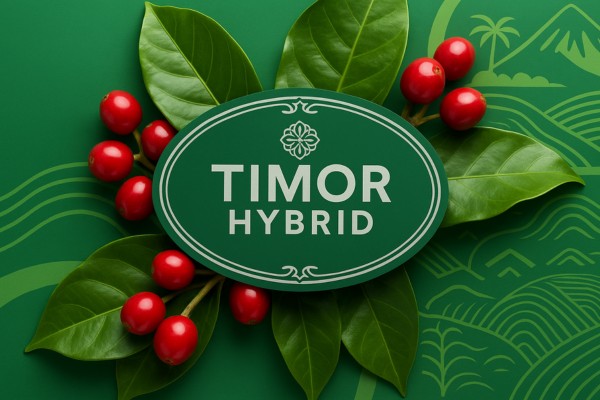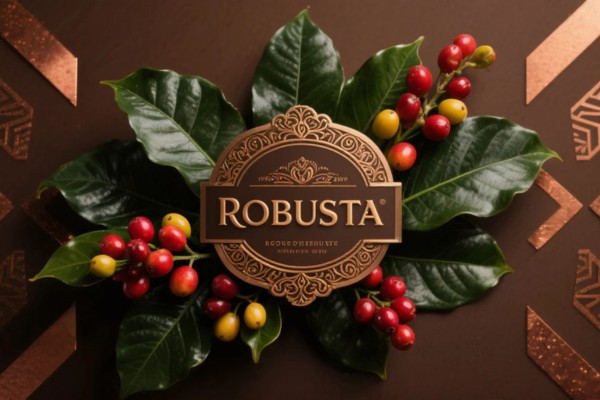
Pacamara: The Exotic Hybrid
Explore the world of Pacamara, the celebrated and exotic hybrid of Pacas and Maragogipe from El Salvador. Learn how this cross created a coffee with the giant beans of Maragogipe and the compact stature of Pacas, resulting in a cup profile known for its extraordinary complexity, intense aromatics, and rich, buttery body.
Pacamara: A Hybrid of Giants and Dwarfs
Pacamara is one of the most exciting and exotic varieties in the world of specialty coffee. It is a man-made hybrid, created by researchers in El Salvador, that combines the genetic lineage of two very different parent plants: Pacas and Maragogipe.
The result is a coffee that is truly the best of both worlds. It has the exceptionally large beans of its Maragogipe parent and the small, compact, and productive stature of its Pacas parent.
But Pacamara is most famous for its extraordinary cup profile. At its best, it is a coffee of incredible complexity, with a powerful aromatic presence, a rich, buttery body, and a dazzling array of sweet, fruity, and spicy flavors. It is a true standout on any cupping table.
An ISIC Creation Story
The story of Pacamara begins in 1958 at the Salvadoran Institute for Coffee Research (ISIC). Researchers were looking to create a new variety that would be agronomically superior and produce a unique and high-quality cup.
They decided to cross two specific varieties:
- Pacas: A natural, dwarf mutation of Bourbon that was discovered in El Salvador. It was chosen for its compact size and good productivity.
- Maragogipe: A natural, "giant" mutation of Typica, famous for its enormous bean size but very low yields.
The goal was to create a plant that had the large beans of Maragogipe but the compact and productive growth habit of Pacas. After more than 30 years of careful selection and development, the F1 (first generation) hybrid, named Pacamara, was finally released to farmers in the late 1980s.
An Explosion of Flavor
The flavor profile of Pacamara is what makes it a legend in the specialty coffee world. It can be wildly complex and is heavily influenced by terroir and processing, but it has a core set of remarkable characteristics.
- Acidity: The acidity is typically bright and well-balanced, but it can range from a tangy citrus and floral quality to a deeper, more savory and complex acidity.
- Body: Pacamara is known for its exceptional body. It is often described as full, rich, and buttery, with a creamy, almost syrupy mouthfeel that coats the palate.
- Aroma: The aromatics are where Pacamara truly begins to show its star power. It can be intensely fragrant, with notes of jasmine, orange blossom, baking spices, and sweet tropical fruits.
- Flavor: The flavor is a journey of discovery. Look for a deep, complex sweetness like brown sugar or molasses, balanced by a wide array of fruit notes—from red berries and stone fruit to exotic tropical fruits. It also frequently has a distinct savory or herbal complexity, with notes of chocolate, spice, and even a hint of onion or tomato in some of the most classic lots.
Agricultural Characteristics
While it was designed for a purpose, Pacamara can still be a demanding plant for farmers to cultivate.
- Large Beans: The variety is famous for its very large beans, a trait inherited from its Maragogipe parent.
- Compact Stature: It grows in a compact, bushy form, like its Pacas parent, which is good for farm management.
- Altitude Sensitivity: Pacamara produces its best and most complex flavors only when grown at very high altitudes, typically above 1,400 meters. At lower altitudes, the flavor can be much less distinguished.
- Nutrient Demands: To support its large cherries and complex flavor production, it requires very nutrient-rich soil and careful fertilization.
Key Growing Regions
Pacamara is the signature specialty coffee of its home country, El Salvador, but its fame has led to it being planted in other countries as well.
- El Salvador: This is the home of Pacamara, and it is here that the variety reaches its most classic and celebrated expression. The country's Cup of Excellence competition is frequently won by Pacamara lots.
- Nicaragua: Producers in Nicaragua have also had great success with the variety, often producing Pacamaras with a slightly different but equally complex flavor profile.
- Guatemala & Colombia: Quality-focused farms in other Latin American countries have also begun to experiment with growing Pacamara, with promising results.
Brewing for a Full Experience
To get the most out of a complex and full-bodied coffee like Pacamara, your brewing method should allow its rich texture and intense aromatics to shine.
- Recommended Methods: Immersion or full-contact brewing methods are fantastic choices. A French Press will produce a rich, heady, and full-bodied cup. For a slightly cleaner but still intensely aromatic brew, methods like the Clever Dripper or a siphon pot are excellent.
- Let it Cool: Pacamara is a coffee that often transforms as it cools. Be sure to taste it at different temperatures to experience the full range of flavors as they evolve, from hot to warm to lukewarm.
Conclusion: A True Specialty Superstar
Pacamara is a shining example of what is possible in coffee breeding. It is a variety that was created with a vision, and it has exceeded all expectations.
It is a demanding coffee for farmers to grow and for roasters to perfect, but the reward is a truly unique and unforgettable sensory experience. For a coffee lover, trying a great Pacamara is a rite of passage—a chance to taste a coffee that pushes the boundaries of flavor and complexity. It is a true superstar of the specialty coffee world.


